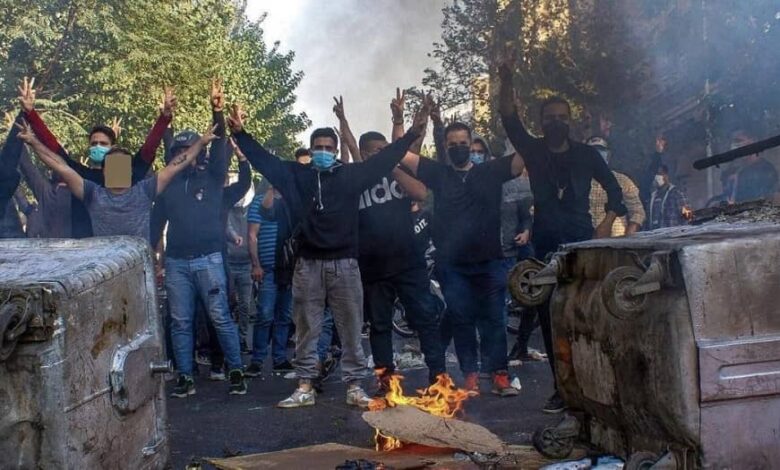Iran’s Regime Faces Fractured Unity as Society Rises in Protests

IRAN PROTESTS & DEMONSTRATIONS
Mahmoud Hakamian
While Iran’s theocratic regime publicly boasts about being a regional power, its officials and state-run media constantly acknowledge the threat of a restive society that has increased the regime’s infightings.
On March 29, Gholamhossein Mohseni Ejei, the regime’s Judiciary chief, acknowledged the regime’s increasing factional feuds and how they would affect the ruling theocracy’s hold on power.
“Today, adversaries and malevolent forces are striving to sow discord, pessimism, and despair among our people. Our goal isn’t merely to secure positions of power and undermine others,” he said. “Instead, we must uphold and fortify our unity, preventing any infiltration by malicious elements and spies into our ranks.”
Iran is suffering from its worst economic crunch in the last century. While some so-called experts try to shift the blame on sanctions, Iranian people have demonstrated their awareness about the regime’s misuse of national wealth and squandering it on terrorism. This is evident in the ongoing protests by people from different walks of life, and their slogans such as “Our enemy is here, they lie it is the U.S.”
Besides, the regime’s judiciary has increased oppression and executions in a bid to terrorize the restive society. Yet, Ejei blatantly claimed, “Our mission today is to administer justice to our citizens, ensuring their dignity both in this life and the hereafter. We must ensure the well-being, peace, and security of our people.”
He’s not the only official who acknowledges the regime’s vulnerability in facing an explosive society. In an interview with the state-run Etemad Online in March, Mansour Haqiqatpour, another official close to the ruling faction said, “A true leader should humble himself before the people; this government has not earned the respect of the Iranian nation. It cannot address our nation’s challenges.”
Watch and judge why this insider is warning that the regime is destined for a collapse or #IranRevolution pic.twitter.com/Ysu6LbOhnz
— NCRI-FAC (@iran_policy) January 1, 2024
“A government should be free from shortcomings and govern the country with independence and reason, yet the current presidential administration falls short of this ideal,” he said, blaming the government of Ebrahim Raisi.
During an interview with the state-controlled Khabar Online news website, Amanollah Qaraee-Moghaddam, a state-affiliated expert, discussed the significant socio-economic changes Iran experienced in the Iranian calendar year 1402 (March 2023-March 2024), emphasizing their impact on the nation’s stability. His analysis delves into the underlying tensions shaping Iran’s social and political environment, particularly noting a significant decline in the middle class, which carries wide-ranging implications.
Qaraee-Moghaddam highlights, “A significant shift we observed in 1402 is the contraction of the middle class. Historically, the middle class has acted as a protective barrier, shielding the lower segments from the influence of the upper class.” According to the expert, its diminishing presence not only disrupts this equilibrium but also sets the stage for possible friction between the lower and upper classes as well as the government. This decline in the middle class thus represents the loss of a pivotal stabilizing element in Iranian society, posing risks to social unity and effective governance.
Watch and judge how this former #Iranian official (who happens to be the son of former regime's president Akbar Hashemi Rafsanjani) warns the state's leadership against #IranRevolution pic.twitter.com/dAS7ewKL8M
— NCRI-FAC (@iran_policy) December 28, 2023
“It’s imperative to quell this rising anger swiftly. The current government, led by Raisi, is the least deserving and incapable of mitigating this frustration,” Fayaz Zahed, a state-affiliated expert, told the state-run Ruydad 24 website on March 25.
When the regime’s Supreme Leader, Ali Khamenei, appointed Raisi as president, it was a brazen bid to fortify his regime. Khamenei hailed the rise of a man with a tainted past as “the pinnacle of 2020.” However, in the wake of a nationwide uprising and mounting economic woes, Khamenei’s grand scheme has crumbled spectacularly.

